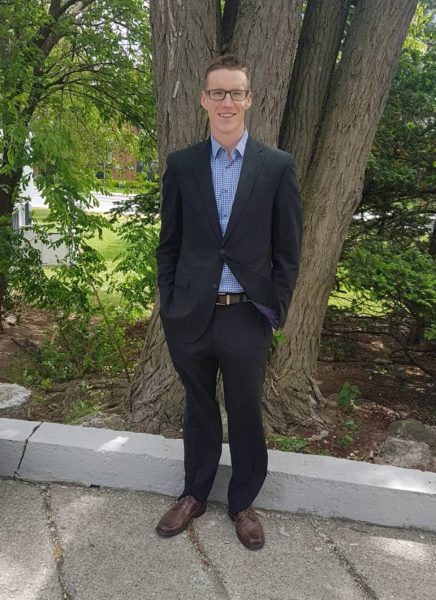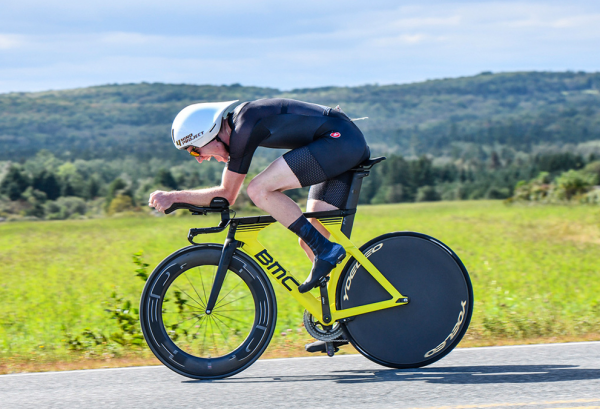By Nikola Stikov

This MRM Highlights Pick interview is with Christopher Rowley and Christine Tardif, researchers at the McConnell Brain Imaging Centre of the Montreal Neurological Institute in Montreal, Canada. Their paper is entitled: “A model-based framework for correcting B1 inhomogeneity effects in magnetization transfer saturation and inhomogeneous magnetization transfer saturation maps“. Their paper was chosen this month because the authors shared their code with their paper and also provided very detailed documentation inside and outside their code.
To discuss this Q&A, please visit our Discourse forum.
MRMH: Chris, to start with, we’d love to know how you got into MRI and ended up working with Christine.
Chris: I started my undergrad studies doing a general life sciences degree at McMaster University, in Hamilton, Ontario. There was an option to take an elective class in medical physics that included a brief introduction to MRI and I got really excited about the whole topic. So, I ended up doing a major in medical physics, picking up any of the MRI classes that were offered along the way. I then worked for a few summers with Dr. Nicholas Bock at McMaster University, on intracortical myelin processing techniques. I chose to do my PhD with him, where I undertook a project studying cortical changes in bipolar disorder using T1-weighted imaging. My PhD experience was heavy on the processing side, but I also wanted to learn more about the physics of MRI. So that’s why I joined Christine’s lab.
MRMH: And you Christine?
Christine: I did my undergrad at McGill in computer engineering, specializing in signal processing. After I graduated, I wasn’t ready to move on to a job in industry. It was during a study abroad program in Glasgow that, while having a beer with colleagues in a pub actually, I first learned about MRI. It seemed like a natural progression to move from 1D signal processing to 2D and 3D image processing. So, I went to Imperial College London to do a one-year masters program, followed by a PhD at McGill and a post-doc in Germany. Although I still do some image analysis, I really enjoy working on the data acquisition part of MRI, so that’s what I focus on more now, here at The Neuro.
MRM: Maybe we could start to unpack the concepts of your paper a little bit for our Highlights audience. Could you introduce the concepts of MTR (magnetization transfer ratio) and MTsat, and explain why MT techniques are good for quantifying brain microstructure and myelination?
Chris: Sure. In MTR you acquire two images, one with and one without an MT-weighted preparation pulse. Generally this is an RF pulse that is applied off-resonance, on the order of 1-10 kHz. The energy from that RF pulse saturates the longitudinal magnetization of the bound pool protons, and then, through stochastic processes, transfers some energy to the water pool where it is observed in the form of decreased longitudinal magnetization. This leads to a water signal decrease that will be proportional to the quantity of bound protons in that voxel, providing us a measure of the macromolecular content. The MTsat technique is an extension of this technique that uses signal modeling to account for the T1 of the voxel that counteracts the MT contrast, which effectively reduces contrast between white and grey matter in the image. But in order to use MTsat, you need to know the T1 as well, so you have to acquire a third image that is T1-weighted. These three images can then be used to calculate the approximate percent signal drop achieved through application of your saturation pulse, and that’s what we call MTsat.
MRM: And so how does B1 come into the story?
Chris: So, this brings us back to the saturation pulse, which is modulated by the B1 profile that your subject experiences in the scanner. We can liken this to what you experience when you place food in the microwave, where the center of your meal will be colder and the edges will be warmer. In MRI, it’s the inverse; the energy your B1 deposits (proportional to the B1 map) will generally be higher in the middle and lower towards the outside. If you don’t correct for that, you’ll have more magnetization transfer in the center of the brain. Therefore, in order to measure something that’s reflective of pure anatomy, you need to correct for B1 in MT techniques.

Christine: B1 inhomogeneities have been haunting the quantitative MRI field for a long time. For me, this has been an issue from the beginning of my career in MRI research since B1 field variations are quite significant in the cortex. For MTsat, Gunther Helms did address B1 nonuniformity in his original paper. He showed that MTsat is relatively robust to small variations in B1. At 3T, a B1 map can be used to further improve MTsat using an empirical correction factor, as seen in work by Nikolaus Weiskopf. What I really like about the B1 correction that Chris has developed here is that it can be applied not only to widely used MTsat protocols, but also to broader applications such as ihMT.
MRMH: So, to summarize, previous approaches involving application of B1 correction to MTsat used empirical factors, whereas here you are properly modeling it so that it can be applied to different pulse sequences. What do you think is the major contribution of this concrete work to the field?
Chris: I think the major contribution is just the flexibility of the method. It was developed with ihMT in mind as, to date, I’ve seen very few papers that have used the same saturation or readout, which doesn’t lend well to using a standard empirical correction factor.
MRMH: Can you tell us about the modeling aspect of the study?
Chris: Yeah, so the idea behind the whole approach was that we can use modeling to account for the difference in MT caused by the differences in B1 values. To make it flexible for use in both MTsat and ihMT, we needed to model three pools: a water pool, a bound pool, and a dipolar pool. We then ran simulations through the differential equations to model the steady state signal changes for a range of different B1 values and tissue parameters. We found that there are two variables that seem to have a high impact on the MTsat value that you would get, namely the longitudinal relaxation rate R1 (1/T1) and the bound pool fraction.
MRMH: And all of this is done for 3T, right? How challenging would it be to apply this to higher field strengths, like 7T?
Christine: That’s our next challenge. Chris’ B1 correction method should work at 7T as well, despite the larger range of B1 variation. Obviously at 7T, SAR is a huge issue as well, so I think part of the challenge will be to optimize the acquisition parameters of the MT sequence to achieve the best MTsat efficiency.
Chris: Also, for the simulations, we need to know the tissue parameters such as the T1 and T2 for each the water and bound pools, magnetization exchange rate and relaxation time of the dipolar order. Because quantitative imaging has been around for so long at 3T, even though there’s still a lot of variability in the literature with regard to what those values are, you nevertheless have a good idea of the range and can simulate for that range. But the literature is not as well established for 7T, and so you’d have to run more simulations for a wider range of potential values. Because the B1 range is also a lot broader at 7T than at 3T, you’d have a much larger range of those values to simulate for, too.
MRMH: Lastly, what do you enjoy doing outside of work?

Chris: When I’m not in the lab, I’m generally on my bike riding around town and also racing, which has got me in trouble on occasions, landing me in hospital, but I’ve been lucky so far in Montreal. My PhD supervisor wanted me to stop. He saw me have a couple bad accidents, so it was a reasonable request! [laughs].
Christine: Outside of academia, I’d say in this phase in my life, it’s mainly about spending a lot of time with my family. My girls are 8 and 10 years old now and super active. So we spend our time playing sports, tennis, skiing, hiking, etc. And travelling… I am really looking forward to travelling again!




